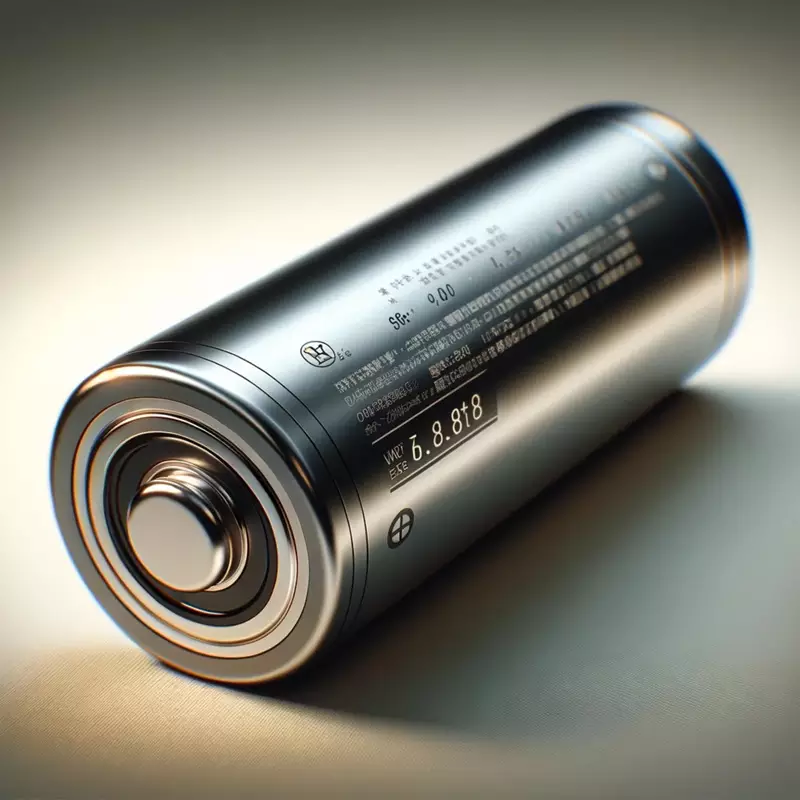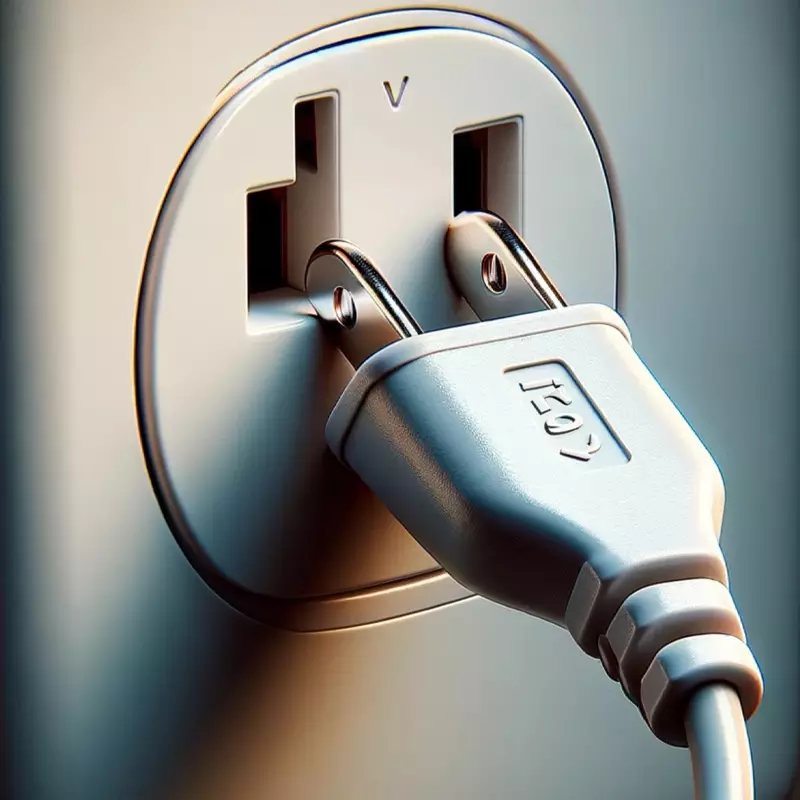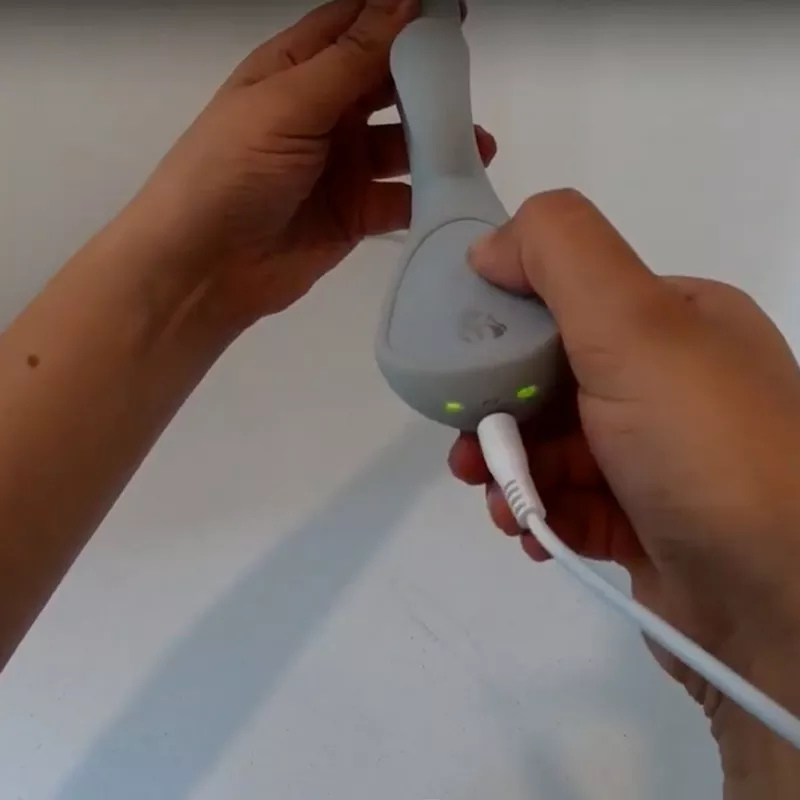The market offers various vibrators, including G-spot, wand, bullet, and dildo types, that enhance sexual experiences. Encountering issues, from minor annoyances to complete malfunctions, can be frustrating.
Investing in quality vibrators is beneficial as they last years with care. Throwing them away at the first malfunction is wasteful. Learning to repair vibrators and understanding standard troubleshooting techniques can save money over time.
Read the User Manual Carefully
For new vibrator owners, initial charging is often required before use. Avoid using the device immediately after purchase.
Vibrators vary in assembly and operation, including switch activation and battery placement. Ensure correct assembly and proper placement of all components.

Button Press Duration Issues
Users commonly press the control button either too briefly or too long. Specific models require a quick press, while others need sustained media for a few seconds. Understanding the device’s controls thoroughly before use is recommended to avoid confusion and ensure proper operation.
Battery Inspection
Ensure batteries are correctly installed with proper alignment of positive and negative terminals, and verify the battery type matches the vibrator’s requirements. For vibrators sold without batteries, purchase the appropriate ones separately.
Many vibrator models feature small plus and minus symbols in the battery compartment to guide correct insertion. In vibrators requiring two batteries, they typically need to be positioned in alternating directions—one facing up and the other down—rather than the same way.
Promptly replace batteries if there’s evidence of acid leakage, corrosion, or damaged wiring.
Battery-Operated Toys: Ensuring Proper Battery Compartment Closure
For “Waterproof” or “Splashproof” toys, a silicone O-Ring is often placed between the battery or controller cap and the toy’s body to prevent water ingress. If your toy has a screw-on cap:
- Ensure the cap is securely tightened against the silicone seal. This is crucial because the design often requires a tight seal for the batteries to establish contact.
- A cap that’s not screwed on tightly enough may prevent the batteries from connecting, resulting in the toy not powering on.
Checking this seal and ensuring a snug fit can resolve power issues and maintain the toy’s waterproof or splashproof integrity.
Device Type: Vibrating Cock Ring or Bullet Vibrator
For compact devices like bullet vibrators, vibrating cock rings, p-spot massagers, or tiny dongs with removable bullets, it’s common to use button-cell batteries (similar to those in watches).
Check for a “battery safety tab” within the battery compartment in such cases. This tab is a temporary block to prevent accidental activation during transit, serving as a “travel lock” for more affordable battery-operated toys.
This tab must be removed to activate the device, allowing the electrical circuit to complete and power to flow. For specific guidance on removing battery safety tabs, refer to detailed instructions provided with your device or available from the manufacturer.
Issues Persisting Post Battery Change
Opt for high-quality, reputable brand batteries for optimal performance. Low-cost batteries may lead to inadequate power, quick depletion, and short lifespan, potentially causing the device to fail at inconvenient times.
Avoid combining new and old batteries, as this practice can lead to performance issues. Always replace with fresh batteries and consider removing them during periods of non-use, such as while traveling, to prolong device life and prevent damage.
Opt for “Regular Duty,” non-rechargeable batteries for your device. These are typically designed to deliver the appropriate power level for most toys.

Power Source Verification
For battery-operated vibrators, ensure the current battery retains charge. Testing the device with a new battery can help determine if power is the issue.
For vibrators with built-in rechargeable batteries, verify the charge level. Attempt recharging for an hour as a test. If the device fails to operate post-charge, the issue may lie elsewhere.
Charger is Looseness
Ensure the charger is securely connected to the vibrator and the power source without looseness. For magnetic chargers, the connection must be firm. If resistance is felt when connecting, the charger is inserted incorrectly and should be adjusted. A lack of resistance may suggest the magnetism is compromised, necessitating careful reattachment.
Incorrect insertion or partial connection of the charger can prevent proper charging. When charging via a computer, ensure the computer is active and not in standby mode.
Inspect the USB charging cable for any damage, such as breaks or wear, which could impede charging.

Charging Compatibility and Port Cleanliness
Most vibrators utilize a USB charging cable; however, the power source can vary, such as a computer or a power adapter, each providing different current levels. It’s essential to follow the manufacturer’s recommended charging method. If the device fails to charge adequately within the specified time using a particular adapter, consider switching to a different charging adapter.
Additionally, ensure that all charging ports are clean and devoid of any obstructions like sticky residues, dust, or lint, which could interfere with the connection and charging process.
Charging issues with vibrators might arise if the port is clogged with dirt or debris, hindering proper connection. Cleaning the port by gently blowing air can remove obstructions. Avoid inserting objects into the port. After cleaning, retry charging to check for improvements.
Charging Time is Not Long Enough
Rechargeable devices often require a full charge before their first use. Consult the product’s instructions for specific charging duration recommendations, as initial charge times can differ by manufacturer, ranging from 2 to 8 hours.

Battery Depletion
If a vibrator is depleted of power and remains uncharged for an extended period, the rechargeable battery may incur damage, rendering it unable to hold a charge in the future. Subsequent charging attempts may fail, or the battery may no longer retain power effectively.
Travel Lock Activation
If your vibrator features a travel lock, it must be deactivated before use. Consult the user manual for instructions on turning off the travel lock and enabling the vibrator to function correctly.
Protective Layer Removal
Some vibrators have a protective layer between the battery and the device to prevent unintended power discharge and electrolyte leakage, which could corrode the vibrator. If present, this protective layer must be removed; otherwise, the device will not operate, regardless of how the switch is manipulated. Ensure that this protective layer is detached from the connection point and the battery for the vibrator to function.

Secure Connections
Correct battery orientation alone isn’t enough; if the battery cover is not securely fastened, it can cause poor contact between the battery and its connection point. This may lead to intermittent power supply, causing the device to work sporadically. Ensure all components are properly aligned, the threads are correctly engaged, and the cover is firmly tightened. Also, inspect the vibrator’s base for any issues with the fit or closure.
App Controlled Vibrator Updates
For vibrators controlled by an app, firmware updates are occasionally necessary for optimal functionality. After establishing the app connection, look for update notifications. Timely firmware updates are crucial, as outdated versions can pose security risks. Manufacturers might turn off older firmware to enforce updates, ensuring device security and performance.
Water Exposure Malfunction
Exposing a non-waterproof sex toy to water or moisture can lead to malfunctions or complete failure of the device.
Moisture Induced Corrosion
Exposure of your toy to damp conditions can cause internal components to corrode, leading to malfunction. Rust on battery terminals can obstruct proper electrical contact, resulting in the toy’s failure to operate.
Detecting Internal Damage
Dropping or mishandling your vibrator can damage its internal wiring, potentially leading to malfunctions or complete failure. In such cases, replacing the toy might be necessary.
Identifying such damage requires disassembling the toy to inspect the internal components. For issues related to integrated circuits, a hardware engineer’s expertise is necessary for definitive diagnosis.
Wear and Damage to the Motor
Over time, the motor within a vibrator can wear out or sustain damage, leading to diminished vibration intensity or complete cessation of function, indicating potential motor issues.
A motor’s reduced efficiency can stem from several factors:
- Lack of Lubrication: Insufficient lubrication can increase friction, slowing the motor. Applying a small amount of 3-in-1 oil (avoid cooking oil for its potential to gum up and avoid WD-40 as it’s not a lubricant) to the motor shaft near the contacts can improve performance. Allow the oil to penetrate before testing the motor.
- Loose Connections: High resistance in the circuit due to loose electrical connections can also impair motor speed. Ensure all connections are secure and well-fitted.
- Internal Obstructions: The device’s design might cause the weight attached to the motor’s shaft to collide with internal components. Check for any obstructions within the housing that might impede the motor’s movement.
- Internal Displacement: While replacing batteries or due to impact, the internal components, including the motor, might have shifted. This displacement can affect the motor’s alignment and functionality. If accessible, reposition the internals correctly and secure any loose components.
If the motor is removable, carefully extract it to address these issues directly. Post-lubrication and adjustments, reassemble and test the device to assess improvements in motor performance.
Dirty or Clogged Mechanism
Accumulated dust, hair, or other debris inside the toy can obstruct its internal mechanisms, impairing functionality. Dirty battery terminals may disrupt electrical contact for battery-operated toys, leading to operational failure.
Physical Damage
Physical impacts, such as drops or hits, can damage the internal components of a sex toy, leading to breakage or malfunction.
Risk of Overheating
Extended use of some sex toys can lead to overheating. To prevent this, taking breaks and adhering to the manufacturer’s usage recommendations is essential.
Overheating Resolution Steps
- Cool Down: If your vibrator overheats, disconnect it from any power source and allow it to cool to room temperature.
- Recharge: Once cooled, attempt to recharge the device. Follow the manufacturer’s instructions for charging to ensure safety and efficiency.
- Assess: Should the device continue to overheat during subsequent charges, it may indicate a need for battery replacement or, in some cases, replacing the device entirely to ensure safety and functionality.
Material Quality Concerns
Sex toys crafted from inferior materials are more prone to breaking or malfunctioning. Opting for high-quality products from reputable brands is advisable for durability and reliability.
Ensuring Compatibility
When using a sex toy with a partner or alongside other toys, verify their compatibility to ensure they function harmoniously together.
Exposure to Extreme Temperatures
Sex toys are susceptible to damage from extreme temperatures. To preserve their integrity, store them in a location that is cool, dry, and shielded from direct sunlight and severe temperature fluctuations.
Wear from Overuse
Frequent or forceful use of a sex toy can accelerate wear and tear, leading to quicker degradation or breakage.
Degradation Over Time
With age, sex toys may deteriorate and become less effective. An old toy might need replacement. Similarly, aged or heavily used batteries can lose their ability to hold a charge, impacting the toy’s performance.
Impact of Electromagnetic Fields
Wireless or remote-controlled sex toys can experience disruptions from nearby electronic devices. Operating these toys in areas with strong electromagnetic fields or other environmental factors might impair their functionality.
Battery Status Alert
Certain sex toys are equipped with a low battery indicator, which signals when the battery level is depleted or requires replacement.
Malfunctioning On/Off Switch
A damaged on/off switch can prevent your sex toy from turning on or off as intended.
Sensor Malfunction
Sensors in your sex toy, designed to respond to movement or pressure, can fail if they become dirty or sustain damage.
Lubricant Compatibility and Quantity
Incorrect or insufficient lubrication can increase friction, potentially damaging the toy and impairing its function.
Internal Fastener Stability
Screws within the toy may loosen over time, leading to misalignment of internal parts, which can disrupt its operation.
Altitude Effects on Internal Pressure
Operating the toy at high altitudes may affect its internal pressure mechanisms, hindering proper functionality.
Magnet Displacement
A dislodged magnet within a sex toy can lead to operational failures or complete cessation of function.
Remote Control Issues
Malfunctioning remotes can impede the effective control and use of remote-operated sex toys.
Factory Defects
Occasionally, sex toys might have manufacturing flaws that necessitate repair or replacement.
Product Recalls
Recalls by manufacturers due to safety or functional concerns can affect the performance of sex toys.
Airflow Disruption
Sex toys relying on airflow for stimulation can be compromised by obstructed or damaged air vents, affecting their functionality.
Thermostat Malfunction
For sex toys with temperature control, a malfunctioning thermostat may lead to incorrect temperature regulation or overheating.
Damage from Improper Disassembly
Incorrectly disassembling a sex toy for maintenance can damage its internal parts, affecting functionality.
Software-Related Issues
Sex toys reliant on software may experience operational problems due to software bugs or glitches requiring updates or fixes.

Software Incompatibilities
Sex toys dependent on software may face issues if there are conflicts with other applications on your device, hindering their functionality.
Bluetooth Connectivity Problems
Bluetooth-enabled sex toys might not function well or could experience frequent disconnections due to weak or unstable Bluetooth connections.
Are you trying to use the vibrator while it’s synced to your phone?
The vibrator won’t operate with your phone during data sync sessions.
Power Source Mismatch
Using a power source that isn’t compatible with your sex toy could lead to operational failures or potential damage to the device.
Charging Efficiency Variances
Using laptop USB ports for charging vibrators may result in slower charging than using an electrical outlet with an adapter, potentially due to laptops entering “sleep mode” or other settings that affect charging. Charging via USB ports might also be inconsistent, especially if the vehicle’s power is turned off. For optimal charging speed, consider using a more stable power source.
USB Port Limitations
Despite their similar appearances, USB ports and devices can vary significantly in the power they deliver, affecting charging efficiency.
Vibrator Storage Guidelines
Proper storage is vital for the longevity and efficacy of rechargeable intimate devices. Consult the device’s manual for charging and storage recommendations. Maintain at least a 50% charge before extended storage, but avoid overcharging, especially for lithium-ion batteries, as it may diminish their charge retention capacity over time.
Periods of inactivity can lead to power depletion in devices. Regular recharging is recommended to ensure readiness for use, which also aids in maintaining performance and prolonging the device’s lifespan.
In extreme temperatures, charging devices, especially those with lithium-ion batteries, can impair their functionality. It’s advisable to avoid setting the battery at temperatures above 113°F or below 32°F to maintain battery health and efficiency.
Storing your sex toy in excessively hot or cold environments can damage its internal mechanisms, leading to operational failures.
Proper Storage Guidelines for Vibrators
To maintain your vibrator’s functionality and longevity, avoid the following storage conditions:
- Avoid Direct Sunlight and Extreme Temperatures: Exposure to high heat can impair the motor and battery, while sunlight can fade and damage the material.
- Avoid Damp or Humid Environments: Moisture can lead to rust and battery damage, compromising performance.
- Avoid Storing with Other Items: Keeping your vibrator with other objects can lead to contamination with dust, lint, and particles, affecting both performance and hygiene.
For optimal storage:
- Choose a Clean, Dry Location: After cleaning and thoroughly drying your vibrator, store it in an environment free from moisture. A clean cloth or towel can ensure it’s scorched.
- Use a Storage Bag or Case: A dedicated storage solution can protect your vibrator from dust and other contaminants while maintaining privacy and discretion.
Seeking Professional Assistance
If all troubleshooting efforts fail, reaching out to customer service is advised. Your product might require factory repair or replacement due to potential defects.

How to Fix a Not Working Vibrator?
Performing a Hard Reset on Your Vibrator
If your vibrator isn’t showing red or any lights and you’re encountering issues, consider performing a hard reset to address the problem.
Read the user manual to learn how to do a hard reset.
How do you hard reset the lioness vibrator?
- Activate your vibrator by pressing the left button (marked with one dot).
- Press the proper button (marked with two dots) for ten seconds.
- After ten seconds, the device will confirm the reset with a quick green light flash, and then it will power off, indicating the hard reset is complete.
- To finalize the process, sync your vibrator to restore your preferred vibration settings and reset the device’s clock.
Reference: Hard reset lioness vibrator video guide.

Troubleshooting Vibrators
For non-functioning vibrators, disassembly may reveal issues like electrolyte leakage or water ingress, significantly if the device’s waterproofing has degraded over time. To address water exposure:
- Power off the device before attempting any fixes.
- Allow the vibrator to air dry naturally or expedite the process with a hair dryer, removing all moisture to prevent short circuits.
- Once completely dry, power the device back to test the motor’s functionality.
If the motor remains unresponsive, employ a multimeter to inspect the electrical pathway from the battery to the motor, verifying if power consistently reaches the motor. This step helps identify whether the issue lies within the power supply or the motor.
Battery Installation Guidance:
- Spring/Coiled Contact: The spring or coiled contact typically aligns with the battery’s flat end, marking the “negative” (-) side in battery compartments.
- Side-by-Side Batteries: For devices using multiple batteries like AA or AAA, the standard orientation involves alternating the direction of each battery: one with the flat (negative) end up, the other with the protruding (positive) end up.
- Troubleshooting Directions: If the device doesn’t power on, experiment by reversing the batteries’ orientation. Some devices might have a unique design that requires both batteries to face the same direction.
- Variable Speed Devices: In “twist dial” vibrators, where batteries stack vertically, they generally should be oriented in the same direction, typically with the negative (flat) end pointing upwards towards the end-cap containing the dial.
If initial attempts are unsuccessful, experimenting with the orientation while ensuring correct contact alignment can help establish the proper setup for your device.
Disconnect the Charger
For rechargeable sex toys, it’s crucial to disconnect the charging cable before attempting to turn on the device.
Most of these toys are designed not to operate while connected to a charger, a safety feature distinct from how more sophisticated devices like smartphones and tablets function.
In sex toys, charging and operation modes are distinctly separate; a connected charger often triggers the toy to enter charging mode, regardless of whether it’s actively receiving power. Ensure the charging cable is entirely removed before testing the toy’s functionality.
Charge Time Consideration
It’s essential to adhere to the specified charge time for sex toys, ensuring the device is charged for the recommended duration without significantly exceeding it.
Overcharging can lead to excessive heat buildup, potentially damaging the device or activating its temperature sensor, causing the toy to shut off automatically as a safety measure. Always consult the user manual for the correct charging period to maintain the toy’s integrity and functionality.
Inspecting the Charger and Power Supply
When charging rechargeable toys, which often utilize a USB port (Universal Serial Bus) found on various devices like computers, phone chargers, TVs, or car stereos, it’s crucial to understand that not all USB ports provide the same level of power (measured in milliamps/ma/mAh). Despite the uniform appearance of USB ports, their power output can vary significantly.
If your toy has been charged for the recommended duration per the instructions but fails to turn on, consider using a different USB power source. It’s worth noting that USB ports on keyboards, monitors, or car stereos might not supply sufficient power for charging. An AC wall plug, similar to those used for smartphones or tablets, usually offers a higher voltage that is more suitable for charging such devices.
Additionally, ensure that the USB ports are clean and free from obstructions like dust, lint, or sticky substances that might prevent a proper connection.

Inspecting the Charging Connection on the toy
The charging mechanism for toys designed with waterproofing often involves a small hole in the silicone casing. This hole, which might resemble a headphone jack and is typically smaller, seals shut to maintain water resistance once the charging pin is removed. Look for a small dot or marking labeled “DC” (Direct Current) to identify where to insert the charging pin.
In the case of toys equipped with magnetic charge connectors, you’ll find two contact points, which may appear as dots or a specific shape, such as a logo or a smiley face. Ensuring these contacts are correctly aligned and in touch with the charging charger is crucial.
To guarantee a consistent charge, prevent movement that could dislodge the charger, such as bumping the toy or pulling on the cable. This careful approach helps ensure the toy receives an uninterrupted charge, which is crucial for maintaining its functionality and readiness.
Securing the Battery Compartment
After verifying the correct orientation of the batteries, if the device still fails to power on, examine the battery cap or base to ensure it’s securely fastened. An improperly aligned or loose cap might result in intermittent or erratic operation, compromising the device’s reliability.
Adjust the cap to ensure it’s correctly aligned, and screw it back on firmly. Inspect the vibrator’s base for any alignment markers or indicators that should match up with the cap, ensuring a secure and proper fit. A well-sealed battery compartment is essential for consistent performance and functionality.
Clean the contacts inside the battery compartment of your device. Use a clean, dry cloth to gently wipe the contacts, removing any buildup or residue that could interfere with the electrical connection.
Waterproof Verification
Before introducing your vibrator to water during bath or shower time, it’s crucial to consult the manual to confirm if it’s waterproof. Using a non-waterproof vibrator in water can lead to malfunction, though it’s unlikely to cause electric shock.
Vibrators vary in water resistance; some are fully waterproof, others can be submerged to certain depths for limited times, and some are only splashproof.
If your vibrator has been submerged and stops working, the best approach is to let it air dry for 48 hours, avoiding using hot air from devices like hairdryers, which could cause further damage. After drying, shake the vibrator to ensure no water remains inside and attempt to power it on. The damage might be irreversible if it was not designed to be waterproof.
Vibrator Cleaning and Maintenance Tips
Regular cleaning is essential for the upkeep and functionality of your vibrator, acting both as a preventative measure and a troubleshooting step. Ensure you clean your toys before and after each use. For more thorough maintenance:
- Dust Removal: Use a Q-tip to gently remove any dirt or debris around the battery compartment and motor area, if accessible. This can prevent buildup that might interfere with the motor’s electrical connections or moving parts.
- Lubricant Selection: Opt for water-based lubricants with your toys. Water-based lubes are safe for all toys and materials, preventing potential degradation from other lubricants. This choice protects the toy’s material and helps maintain its structural integrity over time.
Adhering to these maintenance practices can significantly extend the life of your vibrator, ensuring it remains a reliable and enjoyable part of your collection.
Extending Battery Life in Vibrators
If your vibrator’s battery life is diminishing:
- Proper Charging: Ensure you’re charging the device correctly by checking for any obstructions in the charger port and following the charging instructions provided in the manual.
- Troubleshooting: If the device is appropriately charged but the battery drains quickly, it may have reached its lifespan and require replacement.
Consistent adherence to correct charging practices can help maximize the battery’s efficiency and lifespan.
